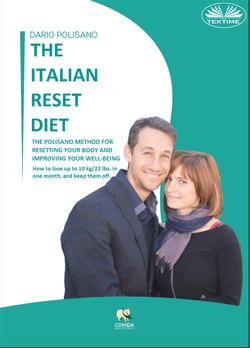Читать книгу The Italian Reset Diet - Dario Polisano - Страница 7
CHAPTER 1
THE “HEALTHY” MEDITERRANEAN DIET
What Was the True “Mediterranean Diet”?
ОглавлениеDear friends and readers, the true “Mediterranean Diet” dates back to the Greeks and the Romans, populations that shared the areas by the Mediterranean Sea. Surely, in those days, there was no physician on duty who recommended the proper food amounts each person needed to eat in order to maintain their ideal weight, or to optimize their health. People ate when they were hungry and, among the poorer echelons, whenever food was available. The cultivation of cereals existed back then too, but luckily for them, agriculture was not as intensive and the consumption of grains was limited to the period from July to December, (if there was a great harvest). For the rest of the year, people’s main meals were based on legumes and wild vegetables, and they ended with dry fruits/nuts. As for the dressing? Extra virgin olive oil.
Surely, breakfast did not consist of a cappuccino with a croissant on the side, nor did they drink warm milk with a tablespoon of sugar, and cookies! If those poor farmers had started their days with such a breakfast, they would not even have had the energy to lift the hoes onto their shoulders! Breakfast was usually at 9 in the morning, after having already put in 4 hours of work, and it was a savory breakfast based on legumes, eggs, and pieces of dry bread. As previously mentioned, because of the lack of flours, bread was not baked every day, but only on the weekend, and it was consumed in broken pieces as an accompaniment for legumes. If we take a look at the nutritional composition of legumes, we see that they contain three times the amount of proteins found in cereals while containing much fewer carbohydrates. Furthermore, they have a much different (and better) glycemic and insulin impacts compared to cereals.
The Romans and the Greeks were noted fishermen, and sheep-farming was very common as well, not to satiate milk-lovers but for the wool, a little bit of cheese, and meat (due to lack of pasteurization techniques, milk was not consumed all that often). The most widespread livestock species, then, were sheep and goats, not cattle; the latter were used as pack animals or for working in the fields.
As for fruit? Because of the lack of refrigeration, they could not preserve fruit all year. Fruit was consumed seasonally: apples and pears in September, persimmons in October and November. Then they waited for the warmer weather to start consuming apricots, strawberries, cherries, loquats, figs, etc. Certain fruits were dried so they could be eaten as sweets during festivities. I only wish that we would consume dried fruits as sweets today! Meanwhile, so-called “barbarians” actually ate only a few berries and nothing else. Nowadays, however, thanks to intensive cultivation, we eat fruit all year, in enormous quantities, including in the form of fruit juices. Fruit does not only mean fiber, vitamins and minerals, but also fructose, a sugar that is almost absent in green vegetables and that, when consumed in excess, becomes very dangerous for the liver, arteries and joints.
When it comes to the true “Mediterranean Diet,” the consumption of oily dry fruits (or nuts) during main meals as a second course or as a snack during working hours was very common, and they often substituted for bread or for other foods for long periods throughout the year.
